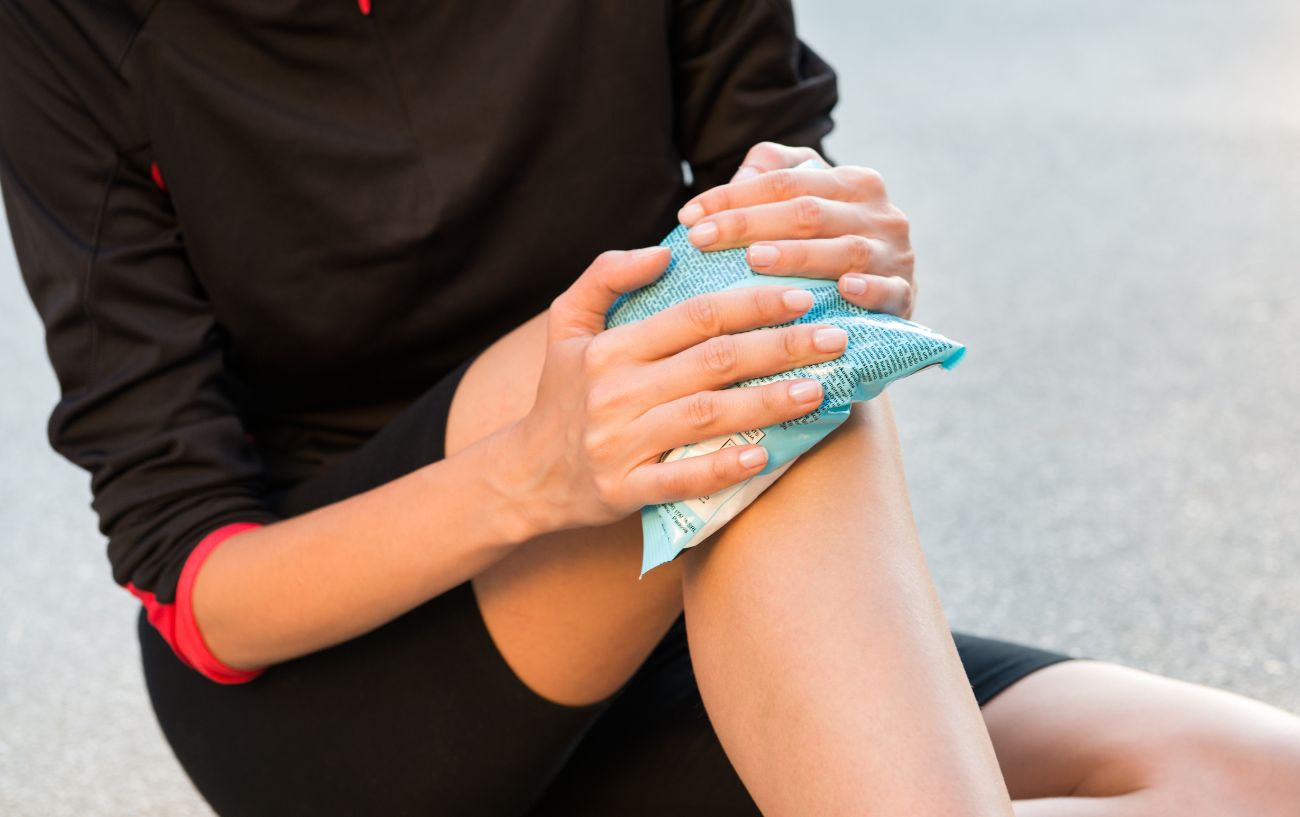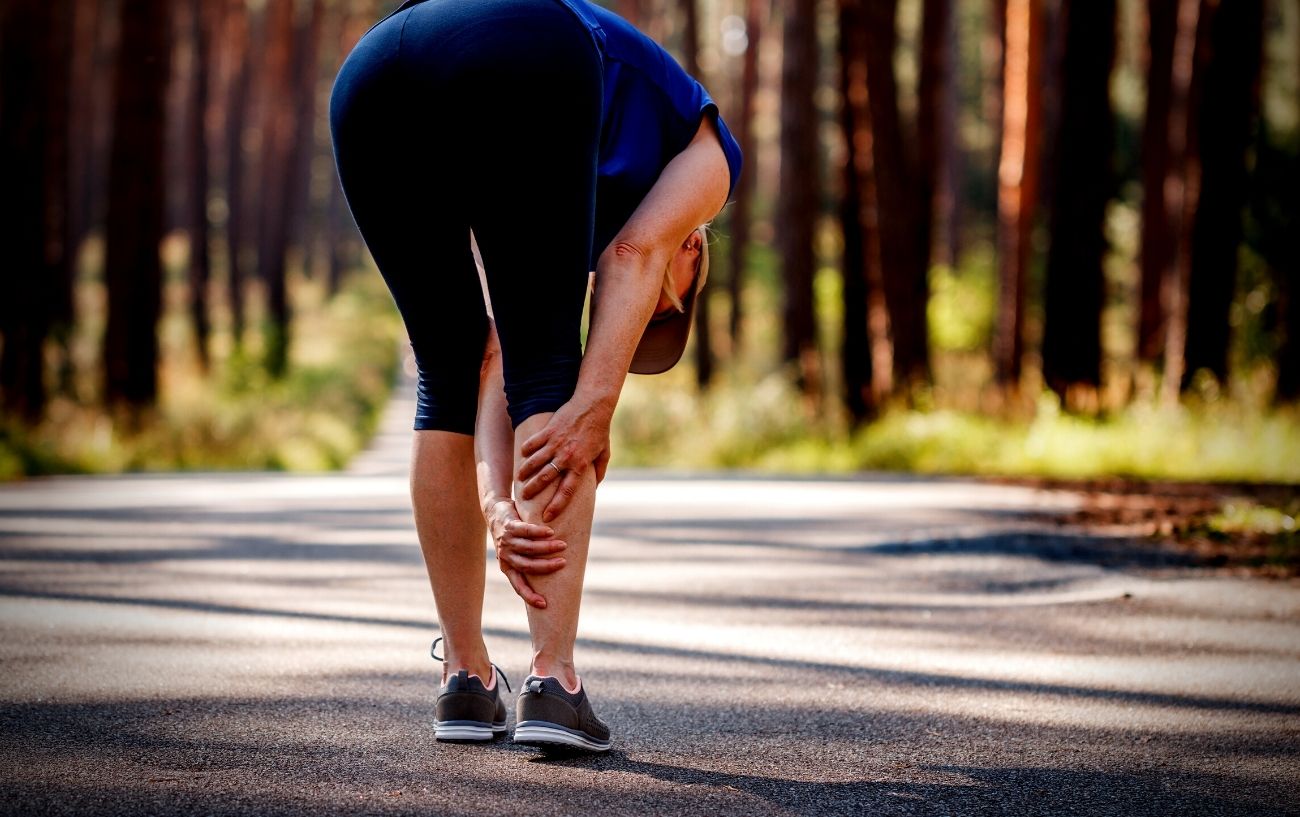Rehabilitation of running injuries is often complex.
Nevertheless, the first port of call you will hear about if you find yourself injured is the RICE (Rest, Ice, Compression, Elevation) protocol.
It has been the gold standard treatment protocol for decades, utilized by coaches and healthcare providers with the intent of expediting the recovery process and reducing inflammation.
Although widely known and extremely popular, the implementation of RICE to assist in the recovery process is often unsubstantiated by quality research.
In this article, we will discuss the up-to-date evidence within the research to clarify whether the RICE protocol is or is not a worthwhile tool for treating acute musculoskeletal injuries.
Here’s what it will look like:
- The History Of RICE, What Is It, And Where Did It Come From?
- Does RICE Actually Work?
- Evidence-Based Alternatives To RICE
- Summary
Let’s jump into it!

The History of rICE, What is it, and Where Did it come from?
Since most of us can remember, ice has been a fundamental aspect of rehabilitation.
On May 23, 1962, twelve-year-old Everett Knowles had his arm severed after jumping on a freight train in Somerville, MA.
For the first time ever, a team of twelve doctors performed a successful limb reattachment, despite the lack of previous medical records of such a procedure.
The operation’s success captured global attention, with reporters focusing on the intriguing aspects of the story. One such aspect was the application of ice to preserve the severed tissue, which slowed down cellular metabolism and helped keep the muscle tissue alive.
This preservation technique, originally intended for severed limbs, eventually became widely used for all injuries.
In 1978, Dr. Gabe Mirkin termed the acronym “RICE” in his widely used “Sportsmedicine Book” as a treatment protocol for acute athletic injuries.

RICE has since been taught in the academic curriculum across the world, embraced by athletes, doctors, and physios.
The classical RICE approach looks something like this:
- Rest: Rest is crucial for the body’s natural healing process, involving avoiding activities that worsen the injury and allowing time for recovery. It prevents further damage and supports the allocation of resources for tissue repair.
- Ice: The application of ice reduces pain, inflammation, and swelling. Cold therapy constricts blood vessels, controlling bleeding and reducing fluid buildup at the injury site. Ice is typically applied for short periods and can be repeated throughout the day.
- Compression: Compression entails applying pressure to the injured area with bandages, wraps, or compression garments. It reduces swelling by preventing excessive fluid accumulation and offers support to the injured tissues. Compression should be firm but not overly tight to avoid compromising circulation.
- Elevation: Elevation involves raising the injured area above the heart level, aiding in swelling reduction and promoting fluid drainage. By utilizing gravity, elevation helps prevent fluid buildup and encourages the return of blood and lymphatic fluid to the circulatory system.
The evolution of RICE was firmly challenged in 2013 by Gary Reinl in his book, “Iced! The Illusionary Treatment Option.”
Reinl stated that the RICE protocol may not accelerate the recovery process, as previously thought, and in fact, they may even cause further damage.

Following the release of Reinl’s book, Dr. Gabe Mirkin, the original orator of RICE, revised his position on the protocol.
Stating:
“Subsequent research shows that rest and ice can actually delay recovery. Mild movement helps tissue to heal faster, and the application of cold suppresses the immune responses that start and hasten recovery. Icing does help suppress pain, but athletes are usually far more interested in returning as quickly as possible to the playing field. So, today, RICE is not the preferred treatment for an acute athletic injury.”
Dr. Gabe Mirkin
The evolution of RICE has traversed many iterations throughout the years, from RICE (rest, ice, compress, elevate) to PRICE (protect, rest, ice, compress, elevate), to POLICE (protect, optimally load, ice, compress, elevate.) Each is slightly better than the last.
In recent years, research has landed upon the acronym “PEACE and LOVE,” which we’ll look at later.
First, let’s take a look at the science underpinning the utility of RICE and whether or not we should continue to use it.

Does RICE Actually Work?
Here we’ll look at the science behind each component of RICE.
Cellular Repair
When the body’s tissues are compromised due to trauma, there are three phases of repair that it goes through:
- Inflammation
- Repair
- Remodeling
Each phase of the repair process must successfully occur to allow for the initiation of the next phase.
#1: Inflammation
The magnitude of the inflammatory response is dependent upon the severity of the trauma.
In contrast to common belief, inflammation is not an undesirable outcome that requires reduction or delay.
Instead, it serves as an immediate defense mechanism aimed at controlling cell injury and priming the tissue for the repair process.
“Inflammation can occur without healing, but healing cannot occur without inflammation.”
Wayne B. Leadbetter

Macrophages are cells that are essential for tissue development and repair; they are responsible for the release of insulin-like growth factor (IGF-1), which is an essential hormone required for muscle regeneration (31).
The lymphatic system is a passive, one-way mode of transportation for excess fluid that relies on the voluntary contraction of the body’s tissues as a method of propulsion.
Therefore, to ensure lymphatic system functionality, the muscles must be actively contracted to facilitate the efficient flow of lymph throughout the body.
When the body is able to successfully clear the damaged site of excess fluid via the lymphatic system, the process of repair is enabled.
#2: Repair
An essential aspect of this phase includes angiogenesis, the division of endothelial cells that add blood vessels to portions of tissues that did not previously have them.
This addition of blood vessels is an essential process because the next phase, “remodeling” of damaged tissues, is dependent upon the body’s ability to reestablish a vascular network for optimal oxygen and nutrient exchange.
Another key aspect of the repair phase is the construction of a temporary extracellular matrix, which is accomplished by fibroblasts.

#3: Remodeling
Fibroblasts are collagen-producing cells that create weak granulation tissue composed of collagen and fibronectin that will provide the framework for the development of new tissue. This process is the remodeling phase.
Now that we’ve covered a brief overview of how the body repairs itself, it’s time to ask the question, “How effective is RICE in aiding and enhancing recovery?”
Ice
The consensus in the literature is that ice acts as an analgesic, providing pain relief.
However, despite the long-standing assumption that ice is beneficial for reducing swelling, clinical research suggests otherwise.
Studies by Meeusen and Lievens have shown that ice is not an effective method for tissue recovery and can actually impede the healing process, causing additional damage.
In fact, using ice may not effectively reduce fluid accumulation and can potentially lead to increased swelling.
Tseng et al. found that topical cooling not only fails to enhance the return to normal concentrations of muscle damage markers and subjective fatigue after eccentric exercise but also seems to delay this recovery.
These findings indicate that the use of ice, which has been shown to delay the inflammatory process, directly inhibits the production of IGF-1 from macrophages, potentially hindering optimal tissue regeneration.

Compression And Elevation
Compression is commonly used with the objective of stopping hemorrhage and reducing swelling. However, it is unclear if reducing swelling helps with recovery.
There is little to no evidence to suggest a definitive recommendation regarding the level and type of compression.
There is also a lack of definitive evidence that supports compression used in conjunction with ice therapy when treating an acute musculoskeletal injury.
Rest
Complete rest is needed if an injury is severe. However, if an injury is minor, active recovery should start right away.
In this sense, “rest” can be detrimental. Instead, we should participate in active recovery.
Active recovery is a broad term that can include any activity that involves the contraction of skeletal muscle tissue that was previously subjected to trauma.
Active recovery can include exercises or low-intensity physical activity that utilizes pain-free movements through a full range of motion.
If an injury is minor, rehabilitation can begin as early as the next day, assuming there is no pain associated with the desired movements.
Consequently, we can infer that active contraction of the skeletal muscles surrounding the site of trauma will enhance the body’s ability to revascularize the damaged tissue.

Evidence-Based Alternatives To RICE
So, RICE is outdated and may cause more harm than good. What should I do now?
Immediately after a running injury, it’s important to follow the PEACE and LOVE approach to ensure proper care and promote healing.
P for Protect:
In the first 1-3 days, restrict movement to minimize bleeding, prevent further injury, and reduce the risk of aggravating the condition. However, prolonged rest should be avoided as it can compromise tissue strength. Pain signals should guide the duration of protection.
E for Elevate:
Elevate the injured limb above the heart level to facilitate fluid flow out of the tissues. While evidence supporting elevation is limited, it carries a low risk-to-benefit ratio.
A for Avoid Anti-inflammatory Modalities:
Inflammation is a natural process that aids in tissue repair. Therefore, avoiding medications that inhibit inflammation is crucial for long-term healing. Anti-inflammatory drugs should not be part of the standard care for soft-tissue injuries.

C for Compress:
Apply external mechanical pressure using taping or bandages to limit swelling and tissue bleeding.
Although studies have conflicting results, compression after an ankle sprain appears to reduce swelling and improve quality of life.
E for Educate:
Get educated on the benefits of an active approach to recovery.
Passive modalities like electrotherapy or manual therapy have minimal effects on function compared to an active approach.
Providing proper education on the condition and load management helps avoid unnecessary treatments, injections, or surgeries.
After the initial days, a different approach is needed to promote healing and recovery.
Soft tissues require LOVE.

L for Load:
Engage in an active approach with movement and exercise, which benefits most individuals with musculoskeletal injuries.
Gradually add mechanical stress and resume normal activities as symptoms allow. Optimal loading promotes repair and remodeling and builds tissue tolerance.
O for Optimism:
Optimistic patient expectations are associated with better outcomes. Psychological factors like catastrophization or fear can hinder recovery, so fostering a positive mindset is important.
V for Vascularization:
Cardiovascular activity plays a key role in managing musculoskeletal injuries.
Pain-free aerobic exercise should be initiated a few days after the injury to increase blood flow to the affected area and improve physical function.

E for Exercise:
Exercise is strongly supported as a treatment for musculoskeletal injuries and reduces the risk of recurrence.
It helps restore mobility, strength, and proprioception during the early stages of recovery. Pain should be avoided, and its presence can guide exercise progressions.
Managing soft-tissue injuries goes beyond immediate damage control.
Summary
The notion that resting an injury and tightly wrapping it with ice to speed up tissue recovery appears to rely solely on unverified information from over four decades ago.
The studies supporting the RICE protocol lack consistency in their experimental and control groups, study duration, and sample size, leading to diluted evidence.
Even the architect of the RICE protocol withdrew his support due to new findings.
Considering the available evidence, it is clear that the idea of using the RICE technique to enhance recovery is undeniably a myth, and superior alternatives should be considered.
If you want to know more about strength training to stay strong and injury-free, check out: 10 Strength Training Tips For Runners, By A Sports Therapist.













